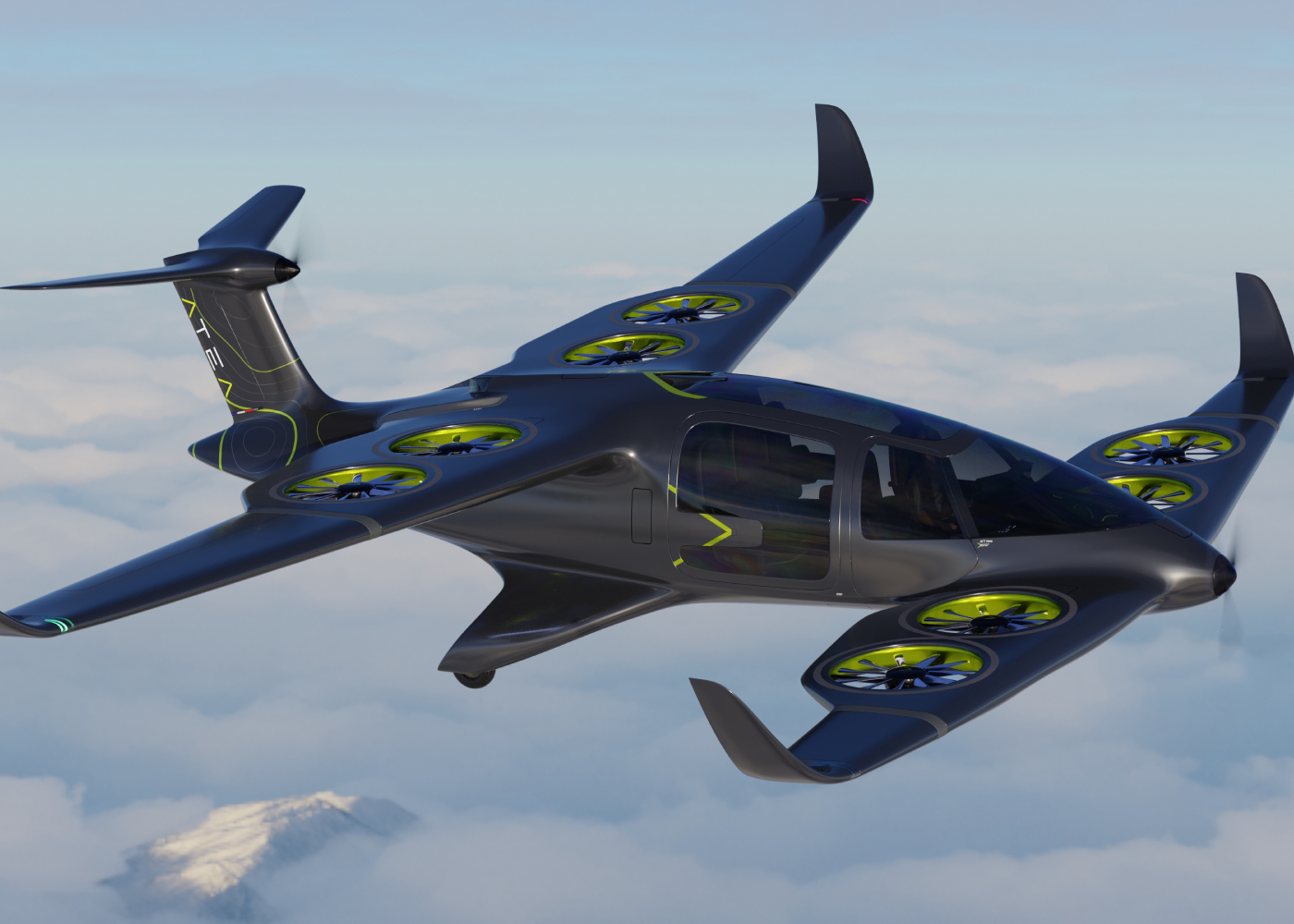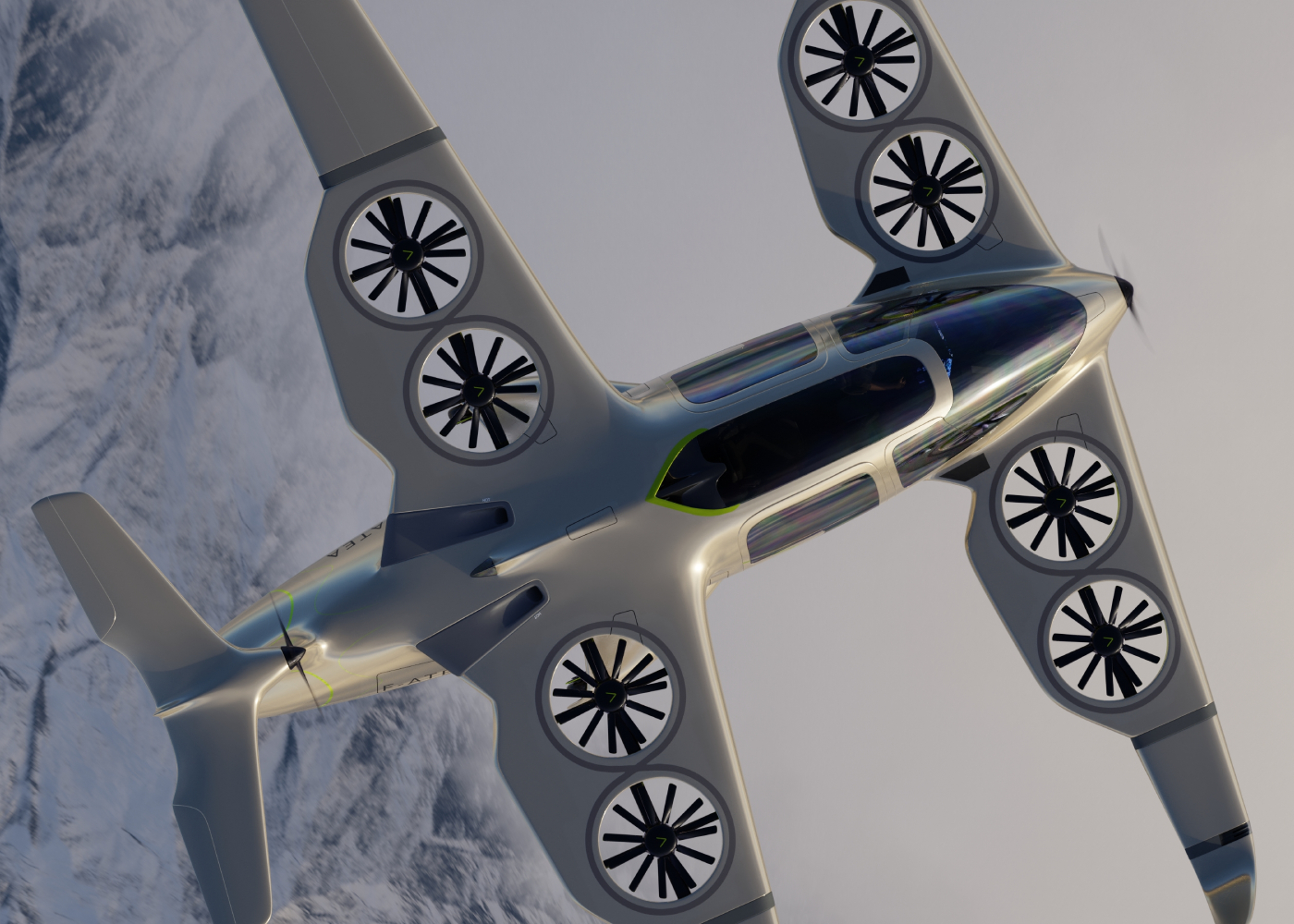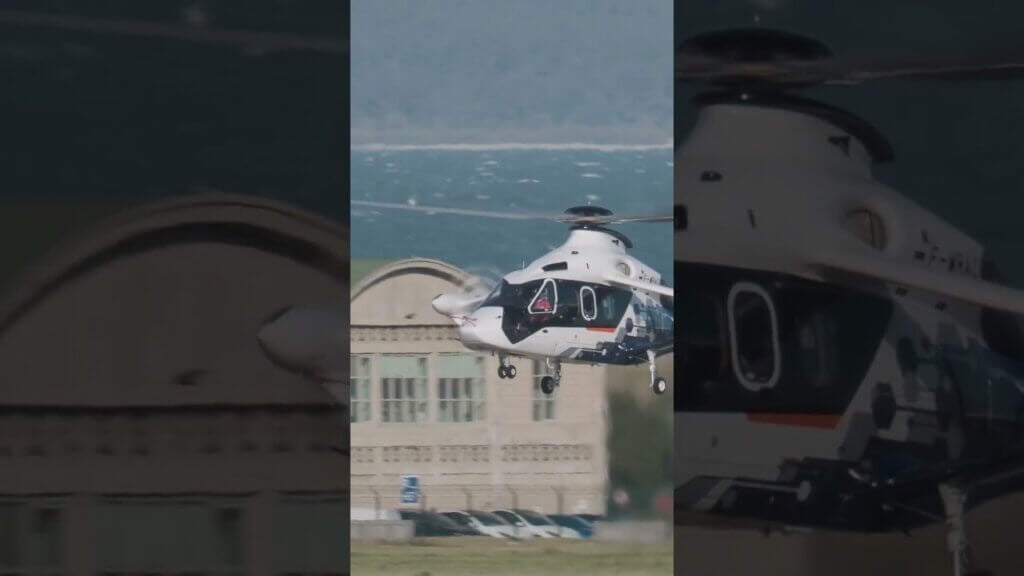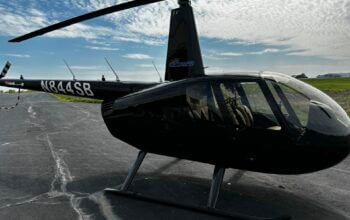Ascendance Flight Technologies, a Toulouse, France-based company, unveiled the new iteration of its hybrid-electric Atea aircraft last month. The striking design marks a departure from the more conventional high-wing monoplane that was shown in previous renderings, to a sleek and futuristic-looking canard configuration aircraft.
Jean-Christophe Lambert, co-founder and CEO of Ascendance, explained the company’s transition since eVTOL.com last spoke to him in March 2021.

Alex Scerri: What triggered this very marked departure from the previous design of Atea?
Jean-Christophe Lambert: [This iteration] is the aircraft we were working on for the past three years in stealth mode. So really, it wasn’t a change. We are just unveiling — or revealing — the aircraft that we always planned to build.
We still have the lift-plus-cruise architecture, and you will notice the additional rotors for redundancy, as required by the European Union Aviation Safety Agency’s [EASA] SC-VTOL. We have recently completed a set of flight tests and wind tunnel work with subscale models. The experimental results and data from this campaign gave us the confidence that this was the right time to reveal the design to the public.
Alex Scerri: When can we expect to see a full-scale flying prototype?
Jean-Christophe Lambert: We are working toward a full-scale flight test some time in 2023.
Alex Scerri: Are you still intent on demonstrating an aircraft at the Paris 2024 Olympic and Paralympic Games as you previously planned?
Jean-Christophe Lambert: We do not expect to do any commercial flights during the Paris 2024 Olympic and Paralympic Games, but it is an important milestone for the company. Therefore, we are working to be fully involved in the advanced air mobility public demonstration that will take place during this showcase event.
Alex Scerri: Will you keep the hybrid powertrain concept, and can you reveal the name of your thermal engine supplier?
Jean-Christophe Lambert: Yes, the hybrid powertrain concept also remains, but I cannot reveal any more details for now. We hope to be able to do so soon.

Alex Scerri: Are there any more specifications you can share with us other than the 400-kilometer (250-mile) range?
Jean-Christophe Lambert: I can confirm that the range will be in the 400-km (250-mi) mark, and the cruising speed will be 200 kilometers per hour (125 miles per hour). The aircraft is a five-seater with four passengers and one pilot, and has a maximum take-off mass of more than 2,000 kilograms (4,410 pounds).
Alex Scerri: This year, you announced some high-profile board members with a considerable and varied experience in aerospace and industry. What impact did this have on the business?
Jean-Christophe Lambert: The board members were immediately behind our initial plan to go for a hybrid-electric aircraft and the lift-plus-cruise configuration. There is already a lot of complexity in designing an eVTOL aircraft, so keeping this simpler architecture is something the board has encouraged. They all have a strong track record in certification and commercialization of aerospace products, so they help us pinpoint and address any industrialization and certification challenges along the way.
Alex Scerri: As you are mentioning the lift-plus-cruise architecture, will your lifting rotors continue to provide lift during cruise flight?
Jean-Christophe Lambert: I cannot give out too much detail, but what I can say is that we have done a lot of work in this area to reduce drag that can be generated by this specific configuration. This was one of the main subjects of the wind tunnel testing that I mentioned earlier.
Alex Scerri: Your aircraft is more targeted toward regional flights than the pure urban air mobility (UAM) mission. Will this open the market potential?
Jean-Christophe Lambert: You are correct. The greater range of 400 km (250 mi) or more that we can achieve today with the hybrid-electric solution opens the market to different target clients. There are not many eVTOL aircraft with this range capability, so I think we are well-positioned to capture a tranche of customers that need the longer ranges, such as inter-island flights and regional mobility. Of course, medevac [medical evacuation] and other state and security air services would also benefit from this range flexibility.
Alex Scerri: How will you decarbonize the thermal component of the powertrain?
Jean-Christophe Lambert: The most pragmatic solution will be to use sustainable aviation fuel. However, the modularity of our powertrain architecture will let us explore other energy sources, such as hydrogen.
Alex Scerri: Do you still plan to be based in the Toulouse area?
Jean-Christophe Lambert: We are a global company, and we have our eyes on the Asian and American markets. However, at this phase of the project, it is important that the engineering team is fully concentrated and dedicated to working on the prototype at a hub location, which is Toulouse. One of our board members is based in Singapore, and we are also part of the Plug and Play Tech Center, an accelerator and corporate innovation platform based in Silicon Valley, so we are spreading our wings in that way.
Alex Scerri: Having attended the UAM flight trials launch event in November at Pontoise-Cormeilles Airport, it appears that there is quite a bit momentum behind the advanced air mobility movement in Paris, as well as in France in general. Do you share this view?
Jean-Christophe Lambert: Yes, absolutely. The work that is being done by the Re.Invent Air Mobility initiative in Paris is key to having all the stakeholders working together toward a common goal of establishing a viable and sustainable market for these aircraft. Being French, I am proud to see this coming together in my country.









Aerodynamics doesn’t care what the members of the Board of Management think.
How does it work if I wanted to invest in the vertical takeoff hybrid?
Paul V